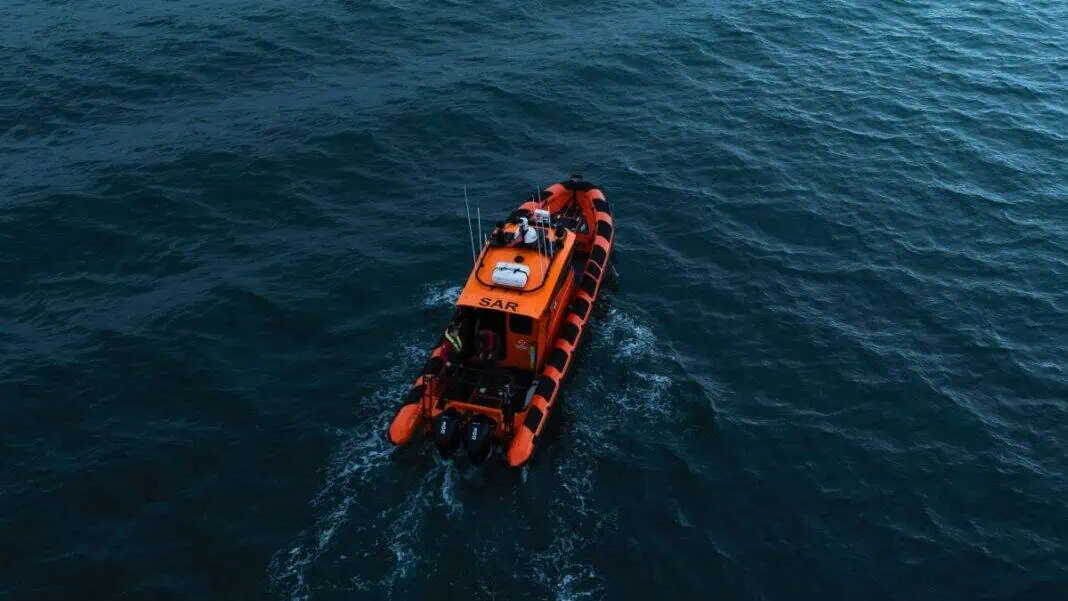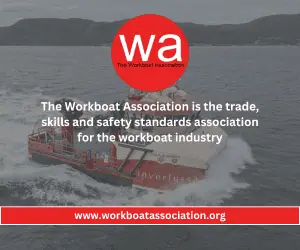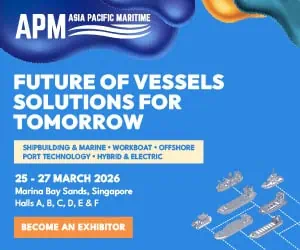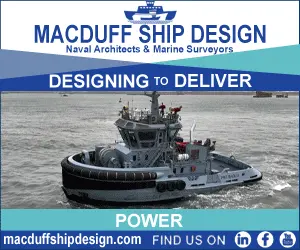For maritime personnel operating high-speed vessels, crew transfer vessels, and small working boats, whole body vibrations (WBV) are more than just an uncomfortable part of the job, they represent a significant occupational hazard with both immediate and long-term health implications. These vibrations, transmitted through the hull, deck, seat, or floor to the crew, can lead to chronic health issues, reduced performance, and compromised safety at sea.
As maritime operations continue to evolve with faster vessels and more demanding schedules, the need for effective WBV management has never been more critical. Hefring Marine addresses this challenge head on with its innovative Intelligent Marine Assistance System (IMAS®), which can be used to help detect, monitor, and mitigate the harmful effects of whole body vibrations in maritime environments.
What causes whole body vibrations in maritime environments?
Whole body vibrations in maritime settings stem from multiple sources working in combination. According to Dr. Magnús Þór Jónsson, CTO and Co-Founder of Hefring Marine, the primary causes include:
Hull-impact and slamming: When vessels, especially high-speed craft, impact waves, they create sudden vertical accelerations that transmit strong vibrations throughout the structure.
Propeller-induced vibrations: Imbalances, cavitation, or turbulent flow around propellers create rhythmic vibrations that travel through the ship’s structure.
Engine and machinery operation: Diesel engines, generators, and pumps generate continuous mechanical vibrations that can affect the entire vessel.
Wave motion and sea state: The natural longitudinal (pitch), lateral (roll), and vertical (heave) movements of vessels due to waves contribute to low-frequency oscillations affecting the whole body.
Structural factors: Poor hull design or structural resonance can significantly amplify vibration levels.
Exposure duration: The length of time exposed to vibrations is critical, the longer the exposure, the more pronounced the effects on crew health and performance.
Impact on crew health and performance
The effects of WBV on maritime personnel are both immediate and cumulative. In the short term, exposure can cause:
- Physical discomfort and fatigue
- Muscle strain and lower back pain
- Impaired balance and coordination
- Reduced alertness and increased risk of operational errors
More concerning are the long-term health implications of prolonged exposure:
- Chronic lower back disorders and spinal degeneration
- Joint and disc damage
- Permanent musculoskeletal injuries
- Circulatory and gastrointestinal problems
- Decreased concentration and cognitive function
“These health risks are especially concerning for crew members on high-speed craft, fishing vessels, and offshore support vessels, where WBV levels can exceed recommended thresholds,” notes Dr. Jónsson.
Research conducted among Icelandic sailors and former U.S. Coast Guard personnel revealed alarming patterns of chronic pain in the knees, lower back, and shoulders among those who operated smaller high-speed vessels. Veterans who frequently engaged in high-speed pursuits reported requiring medical treatment and surgeries related to their injuries, highlighting the serious impact of WBV exposure over time.
High-risk vessels and conditions
Not all maritime operations face equal WBV risk. Certain vessel types and operational conditions create particularly severe exposure scenarios:
High-speed planning craft: Patrol boats, tactical vessels, and search and rescue boats, including rigid inflatable boats (RIBs), experience intense wave impacts that generate high vertical accelerations.
Small fishing vessels, pilotage boats, and crew transfer vessels (CTVs): These workboats often operate in challenging offshore conditions for extended periods of time or make frequent trips, yet may lack advanced shock mitigation systems.
High-risk operational scenarios: Include rough sea states, high-speed transits in choppy waters, frequent wave slamming, extended hours at sea, and high trip frequency.
The risk is compounded when vessels carry passengers who aren’t experienced mariners, such as technicians aboard CTVs, who may be more susceptible to the effects of WBV.
Regulatory standards and compliance challenges
The maritime industry faces several regulatory standards designed to protect personnel from excessive WBV exposure. The European Union’s Physical Agents (Vibration) Directive 2002/44/EC sets specific limits:
- The Exposure Action Value (EAV) of 0.5 m/s², at which employers must take steps to reduce vibration exposure
- The Exposure Limit Value (ELV) of 1.15 m/s², which must not be exceeded under any circumstances
Additionally, the ISO 2631-1 standard provides guidance on measuring and evaluating human exposure to WBV. However, maritime operators often struggle to comply with these standards due to:
- Unpredictable sea states and weather conditions
- Vessel design limitations
- Lack of consistent onboard measurement systems
- Limited awareness and training among operators
- Practical difficulties in retrofitting older vessels with shock mitigation technology
As Dr. Jónsson explains, “Unlike land-based vehicles, maritime vessels frequently operate in unpredictable sea states where wave slamming, and high-speed manoeuvres cause unavoidable spikes in vibration levels.”
Introducing IMAS®
Hefring Marine’s IMAS® represents a significant advancement in maritime safety technology. IMAS® combines sophisticated sensor technology with intelligent analytics to provide real-time monitoring and actionable guidance for vessel operators.
The system integrates seamlessly with existing vessel infrastructure to deliver continuous monitoring of motion parameters that contribute to WBV exposure, including vertical impacts, wave slamming, and prolonged vibration patterns. By processing this data against established safety thresholds, IMAS® can alert operators when conditions approach dangerous levels and recommend appropriate adjustments.
How IMAS® detects and mitigates WBV
IMAS® employs a comprehensive approach to WBV management that spans detection, analysis, and mitigation:
Detection: The system utilizes onboard sensors to measure vessel motion and acceleration across multiple axes, vertical, lateral, and longitudinal. These sensors collect high-frequency time-series data on impacts, vibration patterns, speed, heading, and sea state conditions.
Analysis: The collected data is processed in real time and compared against ISO 2631-1 WBV thresholds and regulatory limits such as those defined by the EU Vibration Directive. The system calculates exposure values (e.g., RMS, VDV) and identifies when WBV levels approach or exceed safe limits.
Mitigation: Once elevated WBV levels are detected, IMAS® provides:
- Real-time feedback to operators via onboard displays
- Suggestions for speed adjustments, heading changes, or avoidance of harsh conditions
- Adaptive operating profiles based on current motion and route conditions
- Post-mission analysis tools for reviewing vibration events and improving procedures
Real-time guidance and performance benchmarking
One of IMAS®’s most valuable features is its ability to provide immediate, actionable insights to vessel operators. The system continuously monitors key parameters and alerts operators when thresholds are approached or exceeded, presenting recommendations through an intuitive interface.
“IMAS® transforms complex motion data into meaningful, easy-to-understand insights that empower vessel operators to make better decisions, before, during, and after missions, leading to improved safety, reduced fatigue, and optimized vessel performance,” says Dr. Jónsson.
The system also offers performance benchmarking capabilities, allowing operators to measure their performance in real-time and after trips. This feature enables continuous improvement and helps identify training needs or operational adjustments that can further reduce WBV exposure.
Post-mission analytics and fleet management
Beyond real-time guidance, IMAS® provides comprehensive post-mission reporting that highlights:
- Periods of elevated vibration exposure
- Operator behaviour and performance benchmarks
- Environmental conditions contributing to high WBV levels
Over time, the system builds historical profiles of vessel behaviour and environmental conditions, enabling:
- Benchmarking between vessels or operators
- Training support for improved navigation strategies
- Data-driven improvements in vessel design and shock mitigation technologies
These insights help operators and fleet managers identify patterns, adjust operational procedures, plan preventive maintenance, and ensure compliance with health and safety regulations.
Technological innovations and future prospects
Hefring Marine continues to enhance IMAS® through ongoing research and development. The system’s modular design allows for continuous improvement and the addition of new features as technology evolves and understanding of WBV improves.
As the maritime industry increasingly recognizes the importance of crew health and safety, solutions like IMAS® are poised to become standard equipment on vessels where WBV presents significant risks.
Conclusion
Whole body vibration represents a significant occupational hazard for maritime personnel, particularly those operating small or high-speed vessels in challenging sea conditions. The health implications, ranging from chronic pain and fatigue to reduce cognitive performance, underscore the need for effective management solutions.
Hefring Marine’s IMAS® offers a comprehensive approach to addressing this challenge through real-time monitoring, intelligent analytics, and actionable guidance. By helping operators make informed decisions that minimize WBV exposure while maintaining operational effectiveness, IMAS® contributes to healthier work environments, enhanced safety, and improved regulatory compliance.
As Dr. Jónsson concludes, “At Hefring Marine, we have made this a priority through the continuous development of IMAS® to help mitigate the risks associated with WBV across different maritime market segments. By integrating real-time sensor data, intelligent analytics, and actionable guidance, we support vessel operators in minimizing exposure to harmful vibrations while maintaining operational effectiveness.”
In an industry where the balance between operational demands and crew safety presents ongoing challenges, technologies like IMAS® are crucial in ensuring that maritime operations can be both efficient and sustainable for the people who make them possible.












